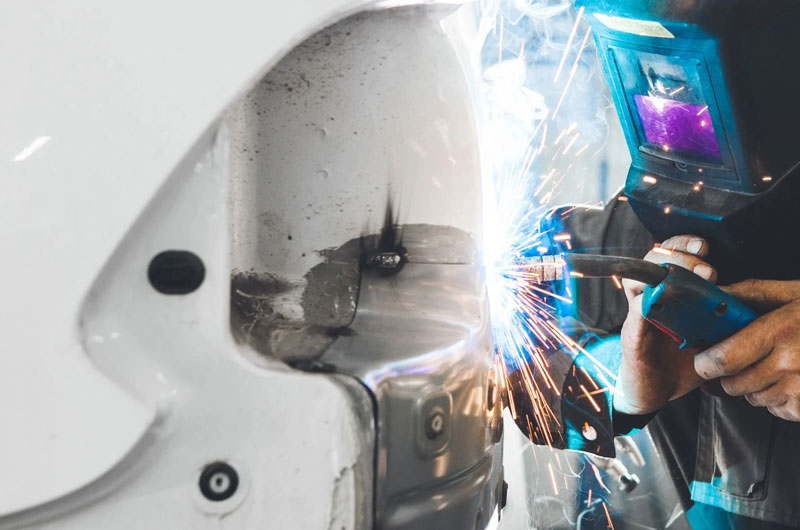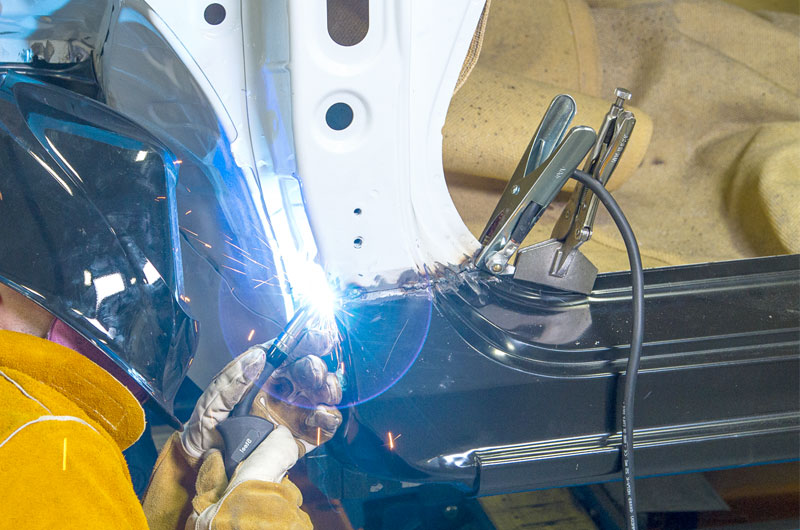Metal welding plays a vital role in the modern automotive and electric vehicle (EV) industries. As vehicles evolve to become lighter, stronger, and more energy-efficient, the demands on welding technologies have intensified. From traditional combustion engine vehicles to the latest EVs, welding ensures structural integrity, safety, and performance.
As manufacturers face stricter safety standards and environmental regulations, precision welding has become a cornerstone in achieving reliable and sustainable vehicle construction.
In this article, we explore the significance of welding in automotive and EV manufacturing, the common welding methods employed, and the types of materials typically welded in the sector.
Importance of Welding in Automotive and EV Manufacturing
Welding is indispensable in automotive and EV manufacturing due to its ability to create durable, high-strength joints. Whether assembling chassis components, joining battery enclosures, or fabricating exhaust systems, welding ensures that parts withstand stress, vibration, and environmental exposure throughout the vehicle’s lifecycle.
1. Structural Integrity
Welding creates robust and seamless joints that contribute to the vehicle’s crashworthiness and durability. This is especially crucial in EVs, where battery protection and passenger safety are paramount.
2. Lightweighting and Efficiency
To enhance fuel efficiency or battery range, manufacturers increasingly rely on lightweight materials such as aluminum and high-strength steel. Welding allows for the joining of these materials without compromising strength, enabling innovative design while reducing vehicle weight.
3. Customization and Modularity
Welding supports flexible manufacturing, which is essential in producing customized components and modular vehicle parts. This adaptability streamlines mass production and supports quicker turnaround times.
4. Cost-Effectiveness
Compared to mechanical fastening, welding reduces the need for additional materials like bolts and rivets, minimizing part counts and reducing assembly costs.
5. Automation Compatibility
Welding processes are highly compatible with robotic automation, which ensures consistent weld quality and high throughput, both critical for large-scale automotive production lines.
Common Welding Methods Used

Automotive and EV manufacturing utilizes a variety of welding techniques, chosen based on material type, component size, required strength, and production volume. Below are the most prevalent welding methods:
1. MIG Welding (Metal Inert Gas Welding)
MIG welding is one of the most common techniques due to its ease of automation and suitability for various metals, including steel and aluminum. It is often used in body panel fabrication and frame assembly.
2. TIG Welding (Tungsten Inert Gas Welding)
TIG welding delivers precise, clean welds, making it well-suited for thin materials and applications where appearance is important. It’s commonly used for welding aluminum battery enclosures and complex EV parts.
3. Resistance Spot Welding
This technique relies on electrical resistance and applied pressure to join overlapping metal sheets effectively. It’s extensively used in joining car body panels, especially in automated assembly lines, due to its speed and repeatability.
4. Laser Beam Welding
Laser welding offers deep penetration and high-speed welding with minimal heat-affected zones. It’s ideal for welding thin and dissimilar materials and is commonly used in battery packs and high-end EV components.
5. Friction Stir Welding (FSW)
This solid-state process is gaining popularity for joining non-ferrous metals like aluminum, particularly in EV battery trays and structural parts. It produces high-strength joints with minimal distortion.
6. Projection Welding
Used for joining nuts, bolts, and brackets to vehicle frames or panels, projection welding focuses heat at specific contact points, allowing for strong, localized welds.
7. Ultrasonic Welding
Primarily used for non-metallic and thin metal components, ultrasonic welding is applied in EV battery and electronics assembly, offering precise, heat-free bonding.
Materials Commonly Welded in Automotive and EV Sectors
As vehicle designs become more advanced, manufacturers use a diverse range of materials to meet performance, weight, and cost targets. Each material brings unique welding challenges and requires specific techniques.
1. Mild Steel
Traditional automotive structures use mild steel for its affordability and weldability. It is easy to weld using MIG, TIG, and resistance methods and is still widely employed in many non-critical areas of vehicle bodies and frames.
2. High-Strength Steel (HSS)
HSS offers improved strength-to-weight ratios and is common in structural components to enhance crash performance. However, it requires controlled heat input to avoid weakening during welding. Resistance spot welding and laser welding are often preferred for HSS.
3. Aluminum Alloys
Aluminum is extensively used in EVs to reduce weight and improve efficiency. Common applications include battery trays, panels, and suspension parts. Due to its high thermal conductivity and oxide layer, aluminum is challenging to weld, making TIG and MIG welding, as well as friction stir welding, the go-to methods.
4. Stainless Steel
Used for exhaust systems, fuel tanks, and certain structural components, stainless steel offers corrosion resistance and strength. TIG welding is often used to preserve its properties and appearance.
5. Copper and Copper Alloys
Essential in EVs for electrical conductivity, copper components are welded in busbars, connectors, and terminals. Laser and ultrasonic welding are preferred due to copper’s high thermal conductivity.
6. Dissimilar Metals
Joining different metals—such as aluminum to steel—presents thermal and metallurgical challenges. Techniques like friction stir welding, laser welding with interlayers, and advanced brazing are used to mitigate issues like galvanic corrosion and weak bonding.
7. Composites and Lightweight Alloys
While not welded traditionally, these materials are sometimes integrated into assemblies using hybrid methods (e.g., welding + adhesives or mechanical fasteners). The evolution of welding to accommodate these materials is ongoing, especially in EV applications.

